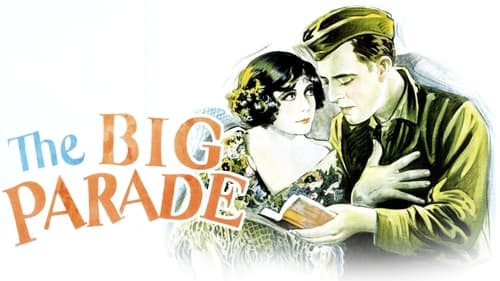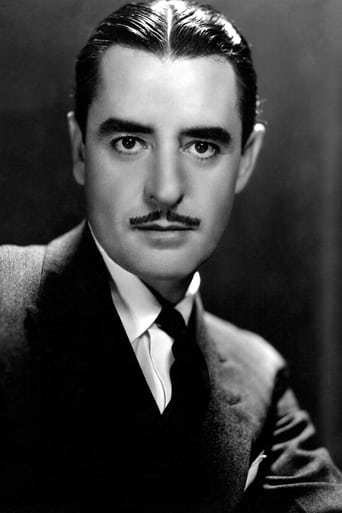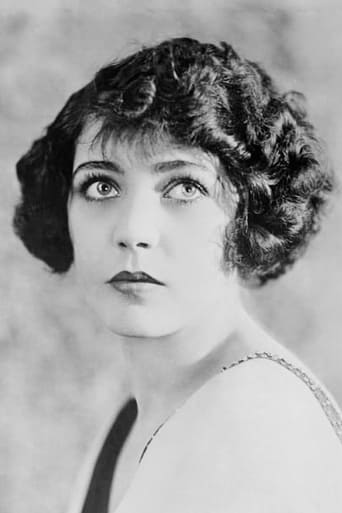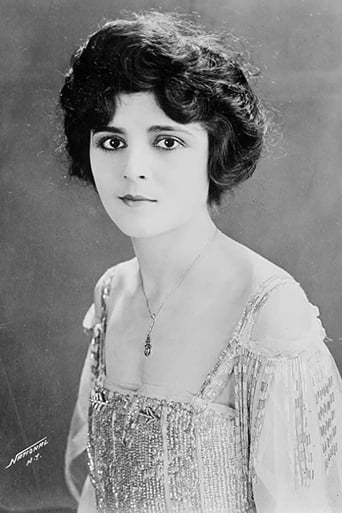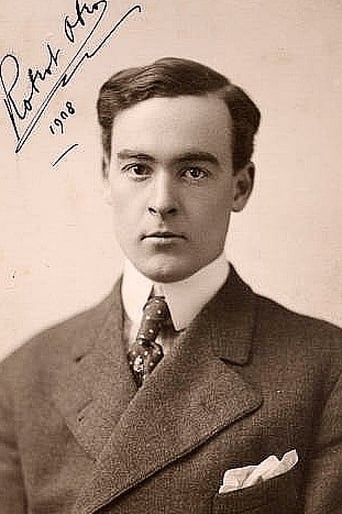Chirphymium
It's entirely possible that sending the audience out feeling lousy was intentional
Ava-Grace Willis
Story: It's very simple but honestly that is fine.
Freeman
This film is so real. It treats its characters with so much care and sensitivity.
Bob
This is one of the best movies I’ve seen in a very long time. You have to go and see this on the big screen.
gavin6942
A young American soldier (John Gilbert) witnesses the horrors of the Great War.The film was groundbreaking for not glorifying the war or ignoring its human costs, exemplified by the lead character's loss of a leg from battle wounds. It heavily influenced a great many subsequent war films, especially "All Quiet on the Western Front" (1930).What really stands out is the new score from Carl Davis. While the film itself is powerful (and has held up very well over the past century), Davis has made it even more engaging and triumphant with his music. I have not heard the old score and cannot compare, but surely it never had the power it does now.
Larry41OnEbay-2
THE BIG PARADE was written by Laurence Stallings, a veteran of World War I. In his autobiography, director King Vidor wrote that he was tired of laboring for months on a feature only to see it play for one week in theaters. So in 1924 he asked M-G-M's head of production, Irving Thalberg for the opportunity to make a "serious" picture that would have legs. Thalberg was convinced that good art and good box office were not necessarily incompatible and the men began to search for an appropriate war story. When Stallings' play WHAT PRICE GLORY? caught Thalberg's attention, the writer was hired.THE BIG PARADE was first designed as a modest programmer concerning one young man's disillusionment in the face of war. When the MGM executives took a look at the rushes, they gave Vidor the go-ahead to film an all-out "spectacular", which ended up running 13 reels and costing a then-astronomical $382,000. It returned 5 million dollars in the days when tickets averaged less than $.25 each.There had been war films before it but Vidor wanted to capture the human dimension behind war from a grunt's point of view. Like Vidor's other masterpiece THE CROWD it shares his philosophy that we are basically anonymous and anti-heroic our destinies determined by events out of our control.The film opens on three young men from different walks of life: a Bowery bartender, Tom O'Brien as Bull; a gawky ironworker Karl Dane as Slim; and a rich man's son, John Gilbert as James or Jimmy. Where the story differs from wartime propaganda is seen in its careful attention to each individuals humanity.The first half of the film is taken up with the horsing around between the army buddies and a young French woman they meet played by Renee Adoree. Their experiences billeting in France are at first light-hearted. There was even some controversy at the time that lip readers could make out actual curse words actors used and later versions had some shots shortened to prevent offending viewers.Gilbert woos the beautiful village girl who looks just like his fiancé back home. Scenes between Gilbert and Adoree, as he shyly flirts and she shyly retreats, made the most of Gilbert's flair for understated acting.The second half of the film gives way to the shocking reality of the horrors of war.The film's many highlights include: the gum chewing lesson (something Vidor claimed he improvised on the set to add a more human dimension); then there is the famous shot of Adoree not letting go of Gilbert as he and his fellow soldiers march to the front with the endless straight-line of hundreds of trucks suggesting the endless amount of supplies and men, the big parade if you will marching off the end of the world.Vidor prepared himself for the subject by screening documentary films made by the U. S. Army Signal Corps during World War I. When viewing footage of a group of soldiers solemnly escorting a funeral cortege, Vidor was inspired to choreograph the filming of the American forces' march through Belleau Wood to the beat of a metronome amplified by a bass drum to heighten the sense of foreboding and death.Sound was used to emotional effect during the film's remarkably successful 2 year run (a little longer than the usual one week run) at New York's Astor Theatre on Broadway, where eighteen men with bugles and wagons filled with iron created sound effects to replicate the experience of actual battle.New York Times placed The Big Parade at the top of its list of best films for 1925, praising it as "the top-notch photoplay of the year" and "unusually original in detail." The Variety review called it "the best of the war pictures" and praised John Gilbert's performance as "superb" and a "triumph for director King Vidor." War films today are usually copies of earlier films influenced by this original, I invite you to see it through those innocent eyes. As if you had never seen a war film and had just walked into a theater in 1925 . . .
theskulI42
King Vidor, like descendant such as Steven Spielberg, became the biggest, most famous directors of their time both for their willingness and desire to give the people what they wanted, across as many genres as possible, to as many people as possible, and The Big Parade depicts that desire in plentiful spades.The film is nominally a war film, taking place during World War I, where the wimpy, idle son of a rich businessman (John Gilbert) is forced by expectations to join the Army, and he is sent to the frontlines in France, where he befriends a few working-class soldiers, as well as finding a sweetheart, French cutie Renee Adoree. Their courtship features the second and third genres of the film, romance and comedy, as the sweet scenes where he teaches her how to chew gum is as charmingly endearing as the love scene where their attempts to whisper sweet nothings are hampered by their constant reliance on their separate translation books; and what is romance without its cousin melodrama, who shows up in chunks to make you weep, lest you be too happy and not affected. There's tragedy and reunions in perfectly modulated chunks, and although I might have rolled my eyes once or twice, it's mostly damn successful.A grand, populist epic, The Big Parade delivers on everything it promises (and it promises a lot), making it one of the better achievements of the entire silent era.{Grade: 8.5/10 (B+) / #2 (of 5) of 1925}
Barry-Brodsky
What constitutes an "anti-war" movie is something I've been discussing with friends for years. I believe the words "futility of war" has to be included in the definition. If WW1 was "the war to end all wars" it was an obvious failure, a failure of massive proportions. And yet the carnage from that war was incredible. this movie was the first to show the war from the point of view of the "grunts" fighting it. But we don't get that until the movie is half over, and that is what I think constitutes the film's genius. King Vidor was a great director, one of the best of his time - others have already commented on his career. But what he and the writer Laurence Stallings gave us in this film was the human dimension; who were those people who fought the war? We meet John Gilbert's character Jim and see him as a spoiled rich kid. Yes, it's stereotypical, but when he watches a 'big parade' he gets bitten with the patriotic bug and joins up. I can relate to that - I joined the Army in 1967 at age 19, and so did a lot of my friends. The middle section of the movie takes place in a French village where Jim, his two buddies Slim and Bull, and the rest of the troops await activation. I was actually a bit disappointed the film didn't show them going through training and becoming soldiers. I think they could have done this and cut out a bit of the village sequences. But nonetheless this is where the love story develops between Jim and Melisande. It's touching, a bit corny, and heart wrenching when Jim finally has to leave for the front lines.The battle scenes were revolutionary for cinema. As snipers shoot at the advancing American troops, I'm sure audiences were sweating it out. I'm also sure that WW1 veterans watching this movie in 1925 were probably flashing back to their experiences, and probably suffering some PTSD attacks, as Vietnam combat veterans did when viewing Oliver Stone's movie "Platoon" more than 60 years later. I personally believe that All Quiet on the Western Front borrowed heavily from these scenes, particularly the scene where Jim finds himself in a foxhole with a wounded German troop and finds that he can't kill him, though the wound he gave him earlier ultimately causes the German's death.Yes, the ending is as corny as can be. But Jim's coming home scene was riveting - and with today's war in Iraq bringing many young Americans home without a limb or two, it is extremely relevant.I didn't find Jim's rant in the foxhole to be over the top at all. Again, I think All Quiet on the Western Front borrowed from it. Who is fighting the war? Why is the war being fought? And who better to ask these questions than the troops on the ground. Given what's transpired in the 82 years since the release of this movie, I find it a stirring anti-war film if for no other reason we know that the deaths of some of the film's characters did not lead to an end to war, as they were promised. And I think King Vidor and Laurence Stallings knew that to be true when the movie was made, some dozen years before the outbreak of war in Europe.

